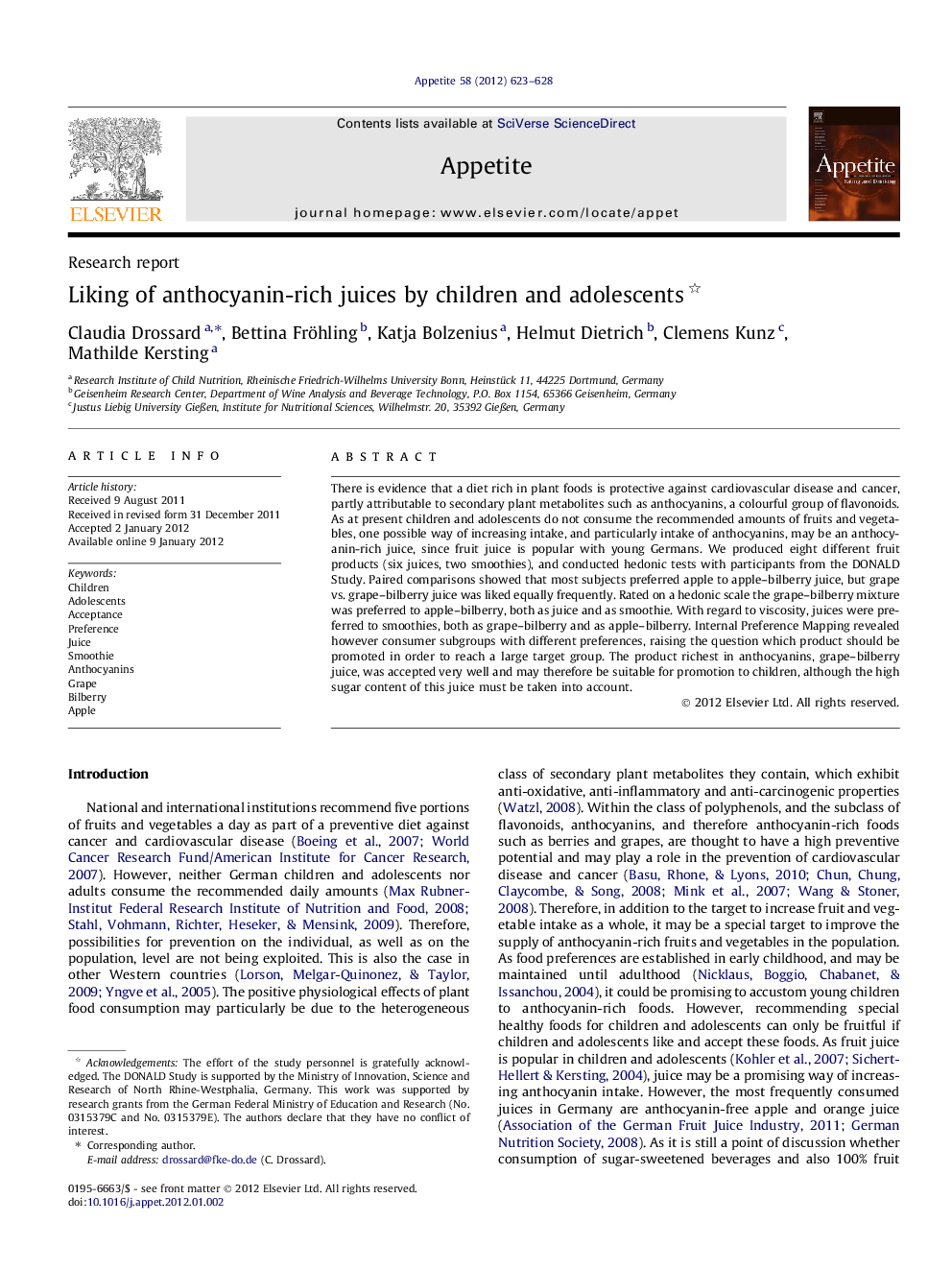| Article ID | Journal | Published Year | Pages | File Type |
|---|---|---|---|---|
| 940520 | Appetite | 2012 | 6 Pages |
There is evidence that a diet rich in plant foods is protective against cardiovascular disease and cancer, partly attributable to secondary plant metabolites such as anthocyanins, a colourful group of flavonoids. As at present children and adolescents do not consume the recommended amounts of fruits and vegetables, one possible way of increasing intake, and particularly intake of anthocyanins, may be an anthocyanin-rich juice, since fruit juice is popular with young Germans. We produced eight different fruit products (six juices, two smoothies), and conducted hedonic tests with participants from the DONALD Study. Paired comparisons showed that most subjects preferred apple to apple–bilberry juice, but grape vs. grape–bilberry juice was liked equally frequently. Rated on a hedonic scale the grape–bilberry mixture was preferred to apple–bilberry, both as juice and as smoothie. With regard to viscosity, juices were preferred to smoothies, both as grape–bilberry and as apple–bilberry. Internal Preference Mapping revealed however consumer subgroups with different preferences, raising the question which product should be promoted in order to reach a large target group. The product richest in anthocyanins, grape–bilberry juice, was accepted very well and may therefore be suitable for promotion to children, although the high sugar content of this juice must be taken into account.
► Anthocyanin-rich fruit products were evaluated hedonically by children and adolescents. ► Juices were liked more than smoothies. ► Grape–bilberry were liked more than apple–bilberry products. ► Blending with apple juice did not influence acceptance of grape–bilberry juice. ► The most favoured grape–bilberry juice was high in anthocyanins, but also in sugar.
